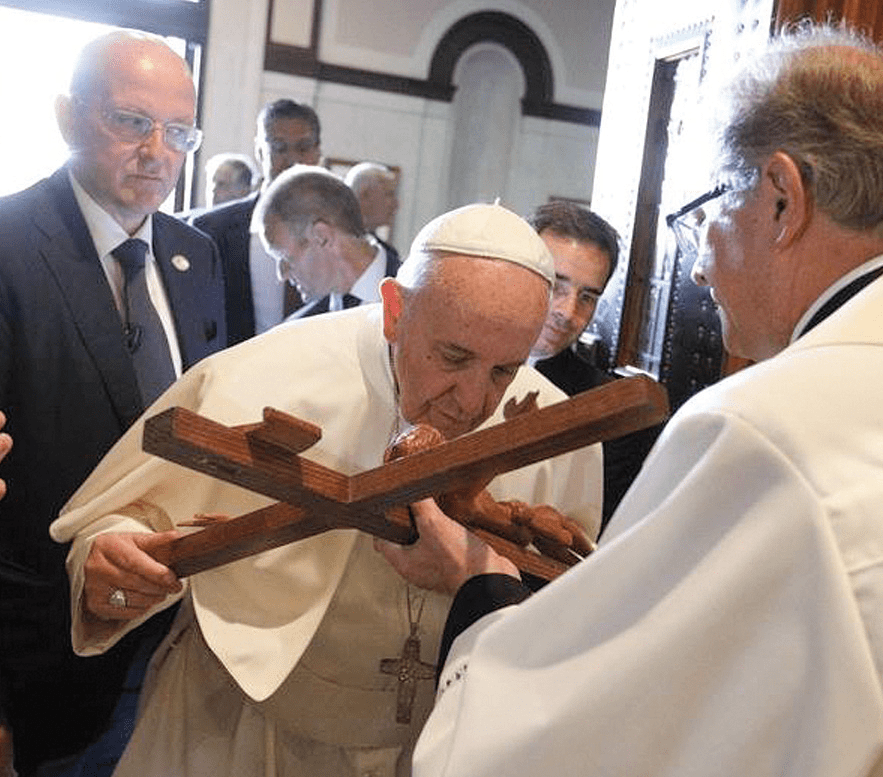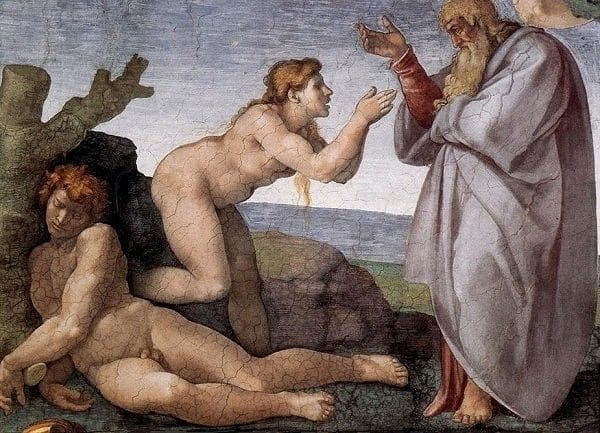In the September 2015 Adoremus Bulletin, Father Dennis Gill spoke in an interview about how the Archdiocese of Philadelphia was preparing for Pope Francis’s historic Sept. 25-27 visit, especially as it related to the two papal Masses he celebrated in the city.
The first of these papal Masses was celebrated on Sept. 26 at the Cathedral Basilica of Ss. Peter and Paul, Philadelphia. Pope Francis celebrated the second Mass on Sept. 27 on the Benjamin Franklin Parkway as part of the World Meeting of Families (WMOF) taking place at that time. This second Mass, by most media accounts, was attended by several hundred thousand faithful.
Ordained a priest for the Archdiocese of Philadelphia in 1983, Father Gill serves as rector of the Cathedral Basilica of Ss. Peter and Paul, Philadelphia, and the Director of the Office for Divine Worship for the Archdiocese of Philadelphia.
Following up on the papal visit, Adoremus once again spoke with Father Gill about what he – and the faithful of Philadelphia and around the country – experienced and learned from Pope Francis’s visit.
Adoremus Bulletin: How did the papal visit fail, meet or exceed your expectations in terms of what went on in the papal Masses in Philadelphia?
Father Dennis Gill: I would say that overall things went very well. We had worked hard and prepared well for the celebration of the sacred liturgy. Our focus was to celebrate the liturgies during the WMOF and with our Holy Father in the most authentic way possible, being attentive to the Roman Rite and celebrating a stational [i.e. normative] Mass with our Holy Father. I think because we were properly guided by the liturgy itself, it was a wonderful experience for many people. They were able to enter into the mystery of Christ and people found it to be very delightful and pleasing to celebrate Mass here on Saturday in the Cathedral and on Sunday on the Parkway.
AB: What did you learn about the role of the liturgy in the Church from the pope’s visit?
FG: I would say the most instrumental figure for us here in Philadelphia was Monsignor Guido Marini [Master of Pontifical Liturgical Celebrations]. Prior to the papal Masses, Monsignor Marini had several practices for the liturgies, and the practices were truly spiritual experiences. He was very much concerned that the seminarians who were serving at the Mass approached the liturgy as the mystery of Christ. He wanted those who were priest masters of ceremony at the two Masses to be guided by the same thought as well. Throughout the course of the liturgy, Monsignor Marini allowed nothing to get in the way of that understanding. I found that to be very impressive.
AB: It’s no secret – it was in the national news – that priests and deacons near the sanctuary with the pope were taking pictures during the celebration of the Holy Sacrifice of the Mass. Lack of catechesis is a big part of the problem here, as you noted, but is there anything concrete that can be done at this point to prevent such mishaps in the future?
FG: To be honest, the priests were reminded not to take pictures or otherwise be distracted from the main purpose of the event – the celebration of Mass. I think it says a lot about our understanding of what happens during the liturgy and our role. The priest should see himself as a concelebrant – linked, one, united with the main celebrant. When I’m teaching seminarians and priests about concelebrating, I tell them that they should never take on a posture or vesture or gesture that doesn’t harmonize with the principal celebrant. That same idea would have applied to every other activity as well. All of a sudden each of these priests moves from being a concelebrant to being a spectator, and that’s where the problem was.
AB: Were there any quiet or hidden moments you’d like to share – glimpses of things that confirmed for you that people got a sense of what was going on?
FG: Personally, the most moving moment was when the Holy Father entered the Cathedral Basilica of Ss. Peter and Paul [for the Sept. 26 Mass], and I presented him with the image of Christ crucified, and he venerated the crucified Christ. For me, that focused everything – the liturgy is the death and resurrection of the Lord. We’re to preach Christ crucified – it was the crux for me [no pun intended] of the whole experience of the Holy Father’s visit to Philadelphia.
AB: Why was that such a special moment for you personally?
FG: I was the one who was presenting Pope Francis with the cross to venerate. When he walked into the Basilica, I welcomed him, and I presented him with the cross. It was very moving. I have a picture of that moment on my desk.
AB: What is the liturgical importance of that moment – that welcome at the door with the crucifix?
FG: Whenever a bishop visits his cathedral church, he can experience that rite – whereby he kisses the cross and blesses the people. We don’t have that practice in the US except when a bishop is being installed in his diocese, but with the Bishop of Rome – the pope – it becomes his prerogative to do that in every cathedral church that he enters, no matter where it is in the world. As simple as that gesture was, kissing the cross and blessing the people with holy water, it spoke with symbols about the founding works of the Church – that is, to celebrate the mystery of Christ, his saving death and resurrection, as it comes to us through the sacraments. So he’s kissing the cross and blessing us with holy water, reminding us of our baptism, and leading of course to the Holy Eucharist. It was a rich and impressive few moments during his visit to our cathedral church.
AB: What will you be telling future priests and seminarians about the Papal visit? What was the “teaching moment” for the liturgy and the priesthood?
FG: I would say the most lasting and valuable moment for me was how the liturgy, whether celebrated by the pope or the parish priest, is accessible by everyone. The papal visit reinforced that idea. Some people have this idea that the papal Mass is some type of celebration that is extremely extraordinary in itself, perhaps in rite or in celebration. But I think what is so remarkable is that whether it’s the Holy Father or any priest celebrating, it’s the Mass. I find it a very comforting and consoling thought – and a rich thought too. There’s an epiphany about the thing – as there should be about every Mass.


